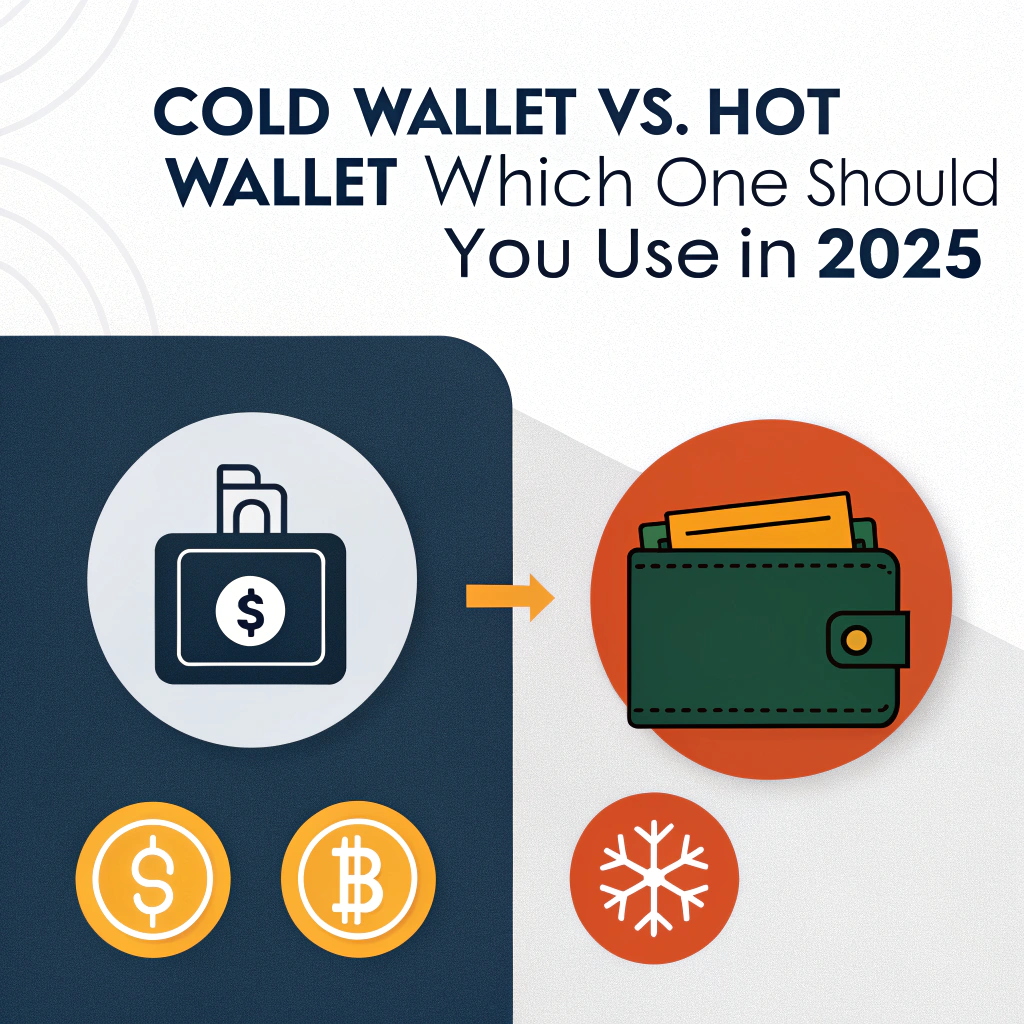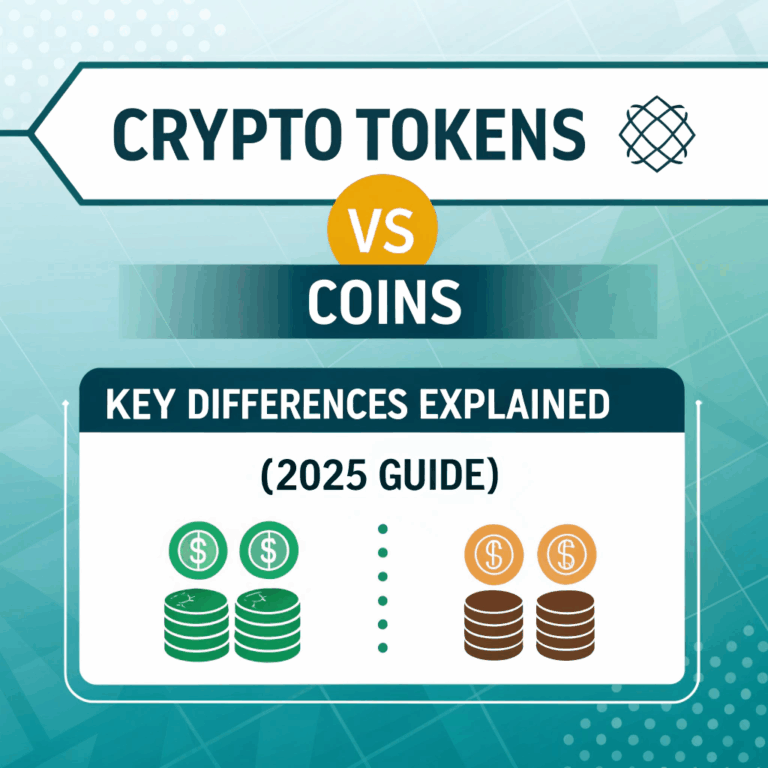Cold Wallet vs. Hot Wallet – Which One Should You Use in 2025

Introduction
As crypto adoption grows in 2025, more users are asking: “Where should I store my coins?” The answer lies in understanding the two main types of crypto wallets — hot and cold. Each serves a different purpose and offers different levels of convenience and security.
What is a Crypto Wallet?
A crypto wallet stores your private keys, which are required to access and control your crypto. It can take many forms — from mobile apps to hardware devices — but its main job is to let you send, receive, and store cryptocurrencies safely.
What is a Hot Wallet?
A hot wallet is connected to the internet and typically used for daily transactions. Examples include:
- Mobile wallets (Trust Wallet, MetaMask)
- Browser extensions (Coinbase Wallet)
- Desktop wallets (Exodus)
- Exchange wallets (Binance, Kraken)
They’re fast, user-friendly, and convenient — but also more exposed to online threats.
What is a Cold Wallet?
A cold wallet is offline — meaning it’s not connected to the internet. It’s ideal for long-term, secure storage of large amounts of crypto. Types of cold wallets:
- Hardware wallets (Ledger, Trezor)
- Paper wallets (printed QR codes or private keys)
- Air-gapped devices (offline computers or USB drives)
They reduce the risk of online hacks and malware.
Key Differences Between Hot and Cold Wallets
| Feature | Hot Wallet | Cold Wallet |
|---|---|---|
| Internet Access | Always connected | Completely offline |
| Security | Lower (vulnerable to hacking) | Higher (offline protection) |
| Convenience | Very easy to use | Requires extra steps |
| Best For | Daily use, small balances | Long-term storage, large funds |
| Examples | MetaMask, Trust Wallet | Ledger, Trezor, paper wallet |
Advantages of Hot Wallets
- Easy to set up and use
- Instant access to funds
- Good for trading and quick payments
- Usually free or low-cost
- Integrates with DeFi apps, dApps, and NFTs
Disadvantages of Hot Wallets
- Exposed to hacking, malware, and phishing
- Risk of theft if phone or PC is compromised
- Often rely on third-party security (browser extensions, app stores)
- Less suitable for holding large balances
Advantages of Cold Wallets
- Maximum protection from online threats
- Private keys never touch the internet
- Ideal for long-term holding (“HODLing”)
- Often used by institutions or serious investors
- Immune to most malware and phishing attacks
Disadvantages of Cold Wallets
- Requires physical access to sign transactions
- Higher upfront cost (hardware wallets $50–$150)
- Not ideal for frequent transactions
- Risk of loss if you misplace the device or seed phrase
When to Use a Hot Wallet
Use a hot wallet if:
- You’re actively trading or using crypto daily
- You hold small to moderate amounts
- You need quick access to DeFi apps, NFTs, or tokens
- You’re just starting and still learning
When to Use a Cold Wallet
Use a cold wallet if:
- You’re storing large amounts of crypto
- You’re holding long-term with no need for frequent access
- You’re concerned about hacks or theft
- You want maximum security and self-custody
Many users combine both:
- Keep daily-use funds in a hot wallet
- Store long-term savings in a cold wallet
Best Hot and Cold Wallets in 2025
Hot Wallets:
- Trust Wallet (mobile, beginner-friendly)
- MetaMask (Ethereum/Web3 integration)
- Exodus (desktop and mobile)
- Coinbase Wallet (separate from exchange)
Cold Wallets:
- Ledger Nano X (Bluetooth-enabled, widely supported)
- Trezor Model T (touchscreen and open-source)
- ELLIPAL Titan (fully air-gapped, QR code transfers)
- SafePal S1 (portable and affordable)
Security Tips for Both Wallet Types
- Always write down your seed phrase and store it offline
- Enable 2FA where possible
- Don’t store private keys in cloud services
- Keep software and firmware updated
- Never share your private key with anyone
FAQ
Is a cold wallet always better than a hot wallet?
Not always. It depends on your needs. Hot wallets are fine for small amounts or daily use.
Can I use both wallet types?
Yes. Many people use a hot wallet for daily use and a cold wallet for storage.
What if I lose my cold wallet device?
You can restore access using your recovery seed phrase — as long as you have it saved securely.
Are mobile wallets safe?
Yes, for small amounts. But always be cautious of malware and phishing attacks.
Conclusion
In crypto, security is everything. Choosing between a cold or hot wallet depends on how you use your crypto. For convenience, go hot. For maximum protection, go cold. And for the best of both worlds? Use both — smartly and safely.





